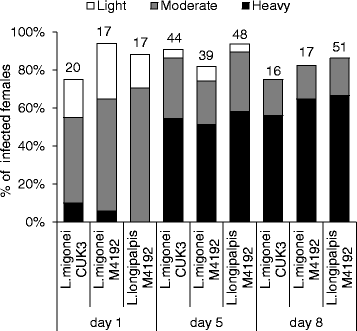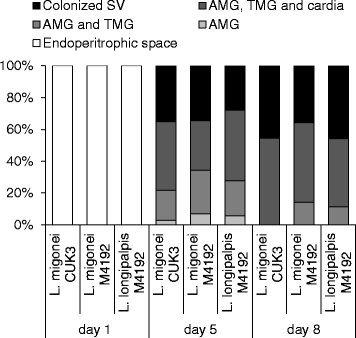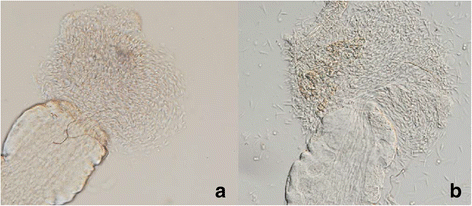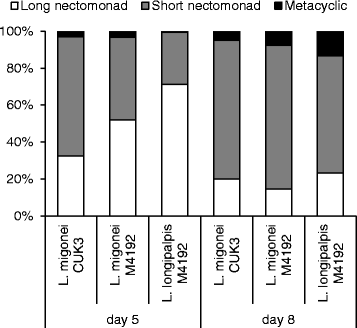Lutzomyia migonei is a permissive vector competent for Leishmania infantum
- PMID: 26988559
- PMCID: PMC4797322
- DOI: 10.1186/s13071-016-1444-2
Lutzomyia migonei is a permissive vector competent for Leishmania infantum
Abstract
Background: Leishmania infantum is the most widespread etiological agent of visceral leishmaniasis (VL) in the world, with significant mortality rates in human cases. In Latin America, this parasite is primarily transmitted by Lutzomyia longipalpis, but the role of Lutzomyia migonei as a potential vector for this protozoan has been discussed. Laboratory and field investigations have contributed to this hypothesis; however, proof of the vector competence of L. migonei has not yet been provided. In this study, we evaluate for the first time the susceptibility of L. migonei to L. infantum.
Methods: Females of laboratory-reared L. migonei were fed through a chick-skin membrane on rabbit blood containing L. infantum promastigotes, dissected at 1, 5 and 8 days post-infection (PI) and checked microscopically for the presence, intensity and localisation of Leishmania infections. In addition, morphometric analysis of L. infantum promastigotes was performed.
Results: High infection rates of both L. infantum strains tested were observed in L. migonei, with colonisation of the stomodeal valve already on day 5 PI. At the late-stage infection, most L. migonei females had their cardia and stomodeal valve colonised by high numbers of parasites, and no significant differences were found compared to the development in L. longipalpis. Metacyclic forms were found in all parasite-vector combinations since day 5 PI.
Conclusions: We propose that Lutzomyia migonei belongs to sand fly species permissive to various Leishmania spp. Here we demonstrate that L. migonei is highly susceptible to the development of L. infantum. This, together with its known anthropophily, abundance in VL foci and natural infection by L. infantum, constitute important evidence that L. migonei is another vector of this parasite in Latin America.
Keywords: Leishmania infantum; Lutzomyia migonei; Vector competence.
Figures




References
Publication types
MeSH terms
LinkOut - more resources
Full Text Sources
Other Literature Sources
Research Materials
Miscellaneous

